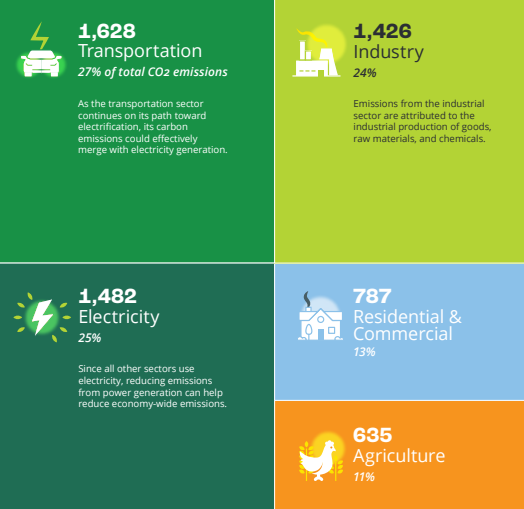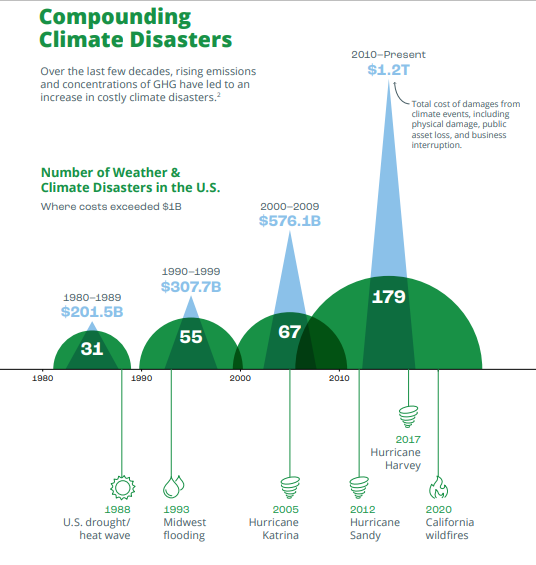Climate Change & Solar
The Need For climate Action
From the beginning of the Industrial Revolution in the 1750s, human activities like the burning of fossil fuel including coal, oil, and gas have been the primary reason for increased GHG emissions in the atmosphere.
Global greenhouse gas emissions must peak by 2025, experience rapid and deep reductions, and reach net zero by the early 2050s to limit warming to 1.5 degrees C in order to avoid the worst impacts of the climate crisis. Many utilities and municipalities have acknowledged this dynamic, but the National Public Utilities Council’s “Annual Utility Decarbonization Report 2022“ report highlights that current utility resource plans are not in line with this overarching target. Obstacles to getting utilities on track that are discussed in our report include: increasing reliance on fossil gas, underutilizing energy efficiency, and placing limitations on popular technologies such as rooftop solar.CO2 Emission and Atmospheric Concentration 1750-2021

Why focus on decarbonizing the power sector specifically?
While emissions reduction opportunities exist in many different sectors, our report focuses on the decarbonization of the electric power sector of the Southeastern United States. Decarbonization is the transition of our power supply to sources that emit lower CO2 emissions, usually with the goal of using zero-carbon resources to power all sectors.
One of the challenges of decarbonizing the power sector is sufficiently reducing emissions while guaranteeing energy reliability, security, and affordability. Despite this, the country’s biggest utilities have the opportunity to facilitate economy-wide decarbonization by being proactive in achieving climate goals.
This is mainly because the decarbonization of utilities and electric power will advance decarbonization in all other sectors that use electricity
Why Solar Might Just Be the Moral Energy Choice
The Green House Effect

Once in the atmosphere, CO2 stays in the atmosphere for over a thousand years. As such, global warming is not something we can stop tomorrow, and decisions made today about energy usage will have long-lasting impacts thousands of years into the future. Due to this cumulative effect, even if we plan several generations ahead, the CO2 will still be in the atmosphere, making our planet warmer. Society simply can’t afford to make changes around fossil fuel consumption at a later date. The problem requires earnest, long-term responses.
A few decades ago, climate scientists would project how the climate would look in a hundred years. However, almost every step of climate science since the late 80s has made scientists realize again and again that the climate is changing more quickly than expected. For example, sea ice is much more fragile than once thought and instead of taking 150 years to break down, scientists are seeing it break down now.



